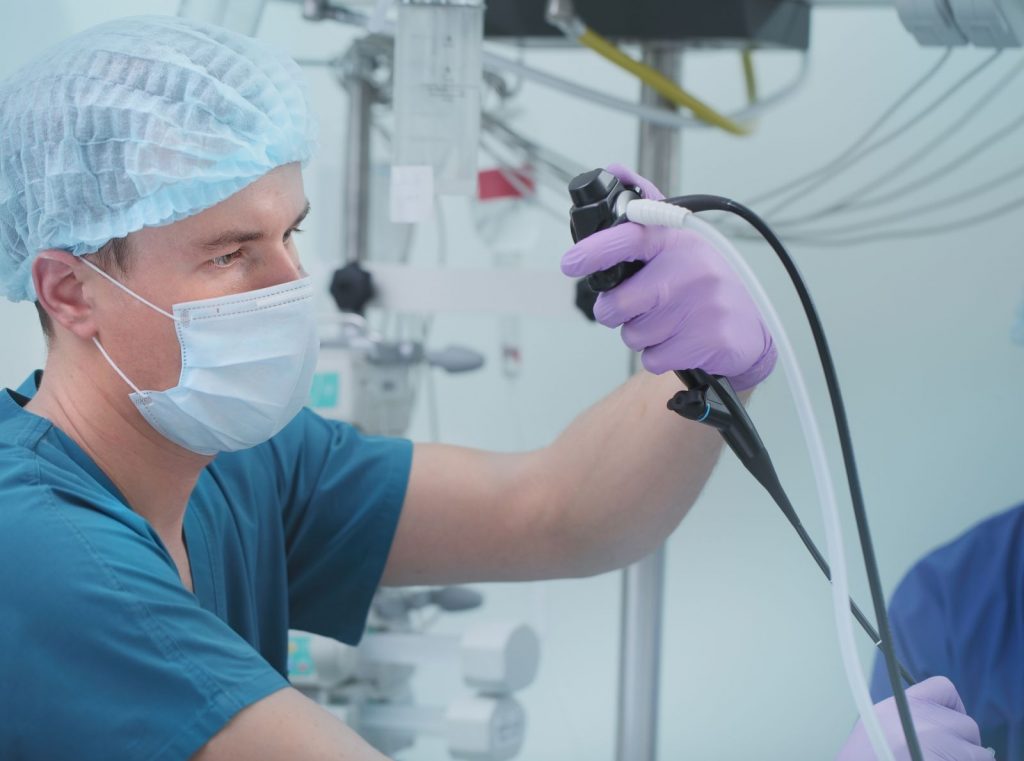
Types of Endoscopies
Endoscopy is a procedure that allows a doctor to view the inside of a person’s body. Doctors use it to diagnose diseases in the following parts of the body:
- Esophagus
- Stomach
- Colon
- Ears
- Nose
- Throat
- Heart
- Urinary tract
- Joints
- Abdomen
Types of endoscopy
The most common types of endoscopy are listed below.
| Name of procedure | Name of tool | Area or organ viewed | How endoscope reaches target area |
|---|---|---|---|
| Anoscopy | Anoscope | Anus and/or rectum | Inserted through the anus |
| Arthroscopy | Arthroscope | Joints | Inserted through a small incision over the joint |
| Bronchoscopy | Bronchoscope | Trachea, or windpipe, and the lungs | Inserted through the mouth |
| Colonoscopy | Colonoscope | Entire length of the colon and large intestine | Inserted through the anus |
| Colposcopy | Colposcope | Vagina and cervix | Placed at the vagina’s opening after a tool called a speculum dilates the vagina. It is not inserted in the body. |
| Cystoscopy | Cystoscope | Inside of the bladder | Inserted through the urethra |
| Esophagoscopy | Esophagoscope | Esophagus | Inserted through the mouth |
| Gastroscopy | Gastroscope | Stomach and duodenum, which is the beginning of the small intestine | Inserted through the mouth |
| Laparoscopy | Laparoscope | Stomach, liver, or other abdominal organs, including female reproductive organs, including the uterus, ovaries, and fallopian tubes | Inserted through a small, surgical opening in the abdomen |
| Laryngoscopy | Laryngoscope | Larynx, or voice box | Inserted through the mouth |
| Neuroendoscopy | Neuroendoscope | Areas of the brain | Inserted through a small incision in the skull |
| Proctoscopy | Proctoscope | Rectum and sigmoid colon, which is the bottom part of the colon | Inserted through the anus |
| Sigmoidoscopy | Sigmoidoscope | Sigmoid colon | Inserted through the anus |
| Thoracoscopy | Thoracoscope | Pleura, which are the 2 membranes covering the lungs and lining the chest cavity, and structures covering the heart | Inserted through a small surgical opening in chest |
Doctors who do an endoscopy go through extensive training to learn these procedures. They also are continually learning about new developments in technology.
What is an endoscope?
During an endoscopy, the doctor inserts a tool called an endoscope into a person’s body. Most endoscopes are thin tubes with a powerful light and tiny camera at the end.
The endoscope’s length and flexibility depend on the part of the body the doctor needs to see.
For example, a straight endoscope helps a doctor look at joints. Meanwhile, a flexible one helps a doctor view the inside of the colon.
Other tools used during an endoscopy
Typically, an endoscope has a channel through which the doctor can insert tools. These tools collect tissue or provide treatment.
Types of tools include:
- Flexible forceps. These tong-like tools take a tissue sample.
- Biopsy forceps. These remove a tissue sample or a suspicious growth.
- Cytology brushes. These take cell samples.
- Suture removal forceps. These remove stitches inside the body
